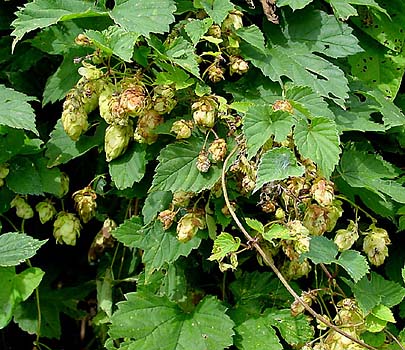by Paul Loughnane
In August the New Ferry Butterfly Park held its annual barbecue and boules match for park volunteers, Wirral Countryside Volunteers and friends of the park. We were very fortunate this year with good weather and a donation by local brewer Mike McGuigan from Betwixt Brewing Company of a cask of Skyline beer, which added to the conviviality of the barbecue. Mike set up a hand pump so that guests could enjoy having a have a chance to pull their own pint.

Mike took a keen interest in one of our butterfly projects, the growing of hops as a food plant for the comma butterfly larvae. Previous hops we planted back in 1998 turned out to be male plants, so no good for the brewer, but acceptable to the larvae of the comma butterfly. Recently we took some cuttings of female hop from a hedgerow in Wirral. There was no fruit on the vines this year, as they have not built up enough energy reserves to flower and fruit, however they did grow an impressive 1.8 metres.
In future the brewer could collect some of the hop fruits to make a small batch of harvest beer made from fresh hops rather than pelleted hops. This will not effect the butterflies as, at this stage of the season, the larvae will have left the hop plants and the adult butterflies will have emerged, busily feeding on nectar to sustain themselves through the winter hibernation.
The numbers of comma butterflies at the park continue to rise reflecting the national trend. The park has been mentioned in the Cheshire and Peak Butterfly Conservation annual report a number of times as it had a significant number of commas.

Comma butterflies suffered a tremendous decline in number and distribution in the 1910s being restricted to an area of garden hop yards in the Worcester area. It is thought the female butterflies lost their taste for hops but then developed a taste for a botanical relative of the hops, the ubiquitous stinging nettle. Since this change of preference of larval host plant the butterfly has made a great recovery.
We hope some butterflies can change their preference again and make use of hops as sometimes our nettle areas can be subsumed by bindweed. The hops give us some further habitat niches for the butterflies as the hops can climb up and beyond the reach of bindweed to sunnier aspects where they can be of benefit to egg-laying commas.
Year Number of Commas recorded
2003 20
2004 26
2005 29
2006 16
2007 38
2008 36
2009 44




